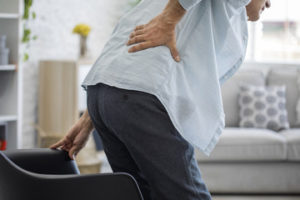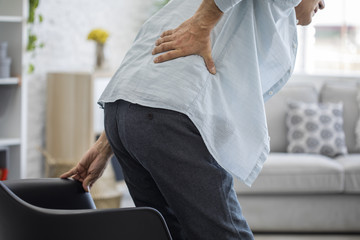Physical Therapy Management of Lumbar Spinal Stenosis
by Taylor Rock PT, DPT
AZOPT Goodyear Physical Therapist
 25% of Americans have experienced low back pain in the last three months. Think about that. That’s 1 out of every 4 people. Not only that, but 80% of you will experience some form of low back pain at some point during your life.
25% of Americans have experienced low back pain in the last three months. Think about that. That’s 1 out of every 4 people. Not only that, but 80% of you will experience some form of low back pain at some point during your life.
One of these potential causes is called lumbar spinal stenosis. This is typically a result of natural aging and is prevalent in 30% of older adults. Lumbar spinal stenosis accounts for the fastest growth in lumbar surgery in older adults throughout the United States. With surgery, comes increased cost, risk of complications or rehospitalization. However, unless the stenosis is severe, this can be managed conservatively with physical therapy.
What is Lumbar Spinal Stenosis?
Lumbar spinal stenosis is a narrowing within the vertebrae of the spinal column in the lumbar region that result in excessive pressure on spinal cord (central stenosis) or nerve roots (lateral stenosis). Stenosis is part of the natural aging process. Currently, there is no way to really prevent it.
Common Causes of Spinal Stenosis
Degenerative disc disease: deterioration of discs between vertebrae results in decreased space between joints and puts pressure on nerve roots.
Degenerative joint disease: deterioration of cartilage between joints and body often forms additional bone (“bone spurs”) to try and support the area.
Spinal injuries, diseases of bone, spinal tumors and thickening of spinal ligaments
Common Signs and Symptoms
- Numbness/tingling down one or both legs
- Weakness of muscles in legs
- Limited and painful walking/standing
- Relief of pain when leaning forward “pushing shopping cart”
#ChoosePT – How Physical Therapy Helps
Manual Therapy: joint and soft tissue mobilizations to help improve mobility of stiff joints and alleviate symptoms.
Gentle motion and stretching: A physical therapist can provide movements (spinal flexion) and stretches to improve mobility of joints and muscles in affected area to help alleviate symptoms.
Strengthening exercises: A physical therapist can design an individualized program for each patient to address muscle weakness (often core, back, and hips) to strengthen muscles and relieve pressure on joints in the spine.
Aerobic exercise: biking, swimming, or walking.
Low back pain is common and stenosis is part of the natural aging process, but experiencing long lasting symptoms is not. If you are experiencing low back pain or stenosis-related symptoms call AZOPT and schedule an evaluation with one of our licensed physical therapists to begin the process of feeling better and functioning better for the activities you need and love.







